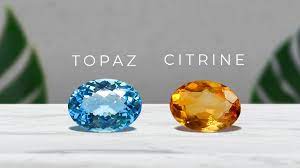Buying an emerald
May 06 2015 0 Comments Tags: Buying, emerald

Colour
Emeralds owe their fine green colour to traces of chromium and/or vanadium impurities. Colour is the most important quality factor and it is made up of hue, tone and saturation. The tone of colour grading refers to the lightness or darkness of the hue.
In Emeralds, the most desirable colours are vivid bluish green to pure green, with lots of depth. Neither too dark nor too pale, and distributed throughout the gemstone. Traditionally emerald green should be the perfect balance of blue and yellow – a pure green hue.
Emeralds from different origins often have distinctive colours although each deposit can have a range in hues.
Find bellow the grade of colour range - in numbers and pictures:
|
0 |
1 |
2 |
3 |
4 |
|
Colourless or White |
Extremely Light |
Very Light |
Light |
Medium-Light |
|
5 |
6 |
7 |
8 |
9 |
|
Medium |
Medium-Dark |
Dark |
Very Dark |
Extremely Dark |

Saturation is the brightness (or purity, intensity) of a hue. The purer the hue, the higher grade it will get on the saturation scale.

Clarity
Clarity - the number, size and position of inclusions in a gemstone - is very important when you are valuating it. However, inclusions are tolerated more in emerald than virtually any other gem. That happens because emeralds, completely free of inclusions, are extremely rare.
Almost all the emeralds contain jardins (French word for gardens). These are entirely natural and can be embedded crystals of other minerals, growth lines, cleavages or tiny fractures.
In some people opinion, the inclusions give more identity to the gem and it is an evidence of genuineness. They are a kind of code – can reveal the story of the gemstone’s origin, part of the character of the stone. Emerald clarity, unlike diamond, is graded by eye. If an emerald has no inclusions that are visible to the naked eye, it is considered flawless.
Find bellow the grade of inclusions used for Emeralds - in code and picture:

|
Exceptional |
Very Good |
Good |
Fair |
Poor |
|
VVS |
VS |
SI |
I1... I2 |
I3 |
|
Very Very Slightly Included |
Very Slightly Included |
Slightly Included |
Included |
Excessively Included |
Cut
 Cutters have developed a special cut just for emeralds: the emerald cut. That happened due to Emeralds hardness– about 7.5 or 8 on the Mohs scale. The stone is also brittle, and this, together with the presence of “jardins”, can make it a challenging gemstone to cut and to set.
Cutters have developed a special cut just for emeralds: the emerald cut. That happened due to Emeralds hardness– about 7.5 or 8 on the Mohs scale. The stone is also brittle, and this, together with the presence of “jardins”, can make it a challenging gemstone to cut and to set.
The design of emerald cut was specially created to protect the gem from mechanical strain caused by inclusions or cracks. The emerald-cut is a step or trap-cut featuring a rectangular or square shape with truncated corners. It was developed to show emeralds off to best advantage while minimising the risk of fracturing or chipping. This cutting style maximizes the beauty and colour of the stone
Emeralds are also available in cushion, oval, round and other traditional cuts. Recently the smooth, dome-shaped cabochon cut has become very popular. Highly transparent and clear materials are sometimes cut with brilliant-style.
If an emerald is well cut, it will mask colour variation, inclusions and other imperfections, and not create “extinctions” (dark patches). It is regarded a gemstone with a well proportioned and symmetrical, with no distortions. It should have sharp facet edges and flat faces and the gemstone should be free of chips and scratches. When polished well the gemstone should also possess good lustre. The desired quality is known as “vitreous”.
Carats
Emeralds price increases with geometrical progression like any other gemstone. Due to the rarity of clear big stones, a 2 carats emerald may cost three times or more them a carat emerald.
Treatments
 Oiling the emerald - to enhance it’s colour, mask inclusions and increase stability - is a common treatment and there is nothing untoward about this centuries-old process.
Oiling the emerald - to enhance it’s colour, mask inclusions and increase stability - is a common treatment and there is nothing untoward about this centuries-old process.
This term refers to the practice of immersing emeralds in a colourless oil or resin. It doesn’t damage the gemstones and its effects dramatically improve the appearance of them - please take a look at the picture beside which shows an emerald before and after the treatment. Most of the times, the process is done at the mining location.
Oiling treatments are perfectly accepted in the gemmological industry – but you need to be sure that a colourless oil was used.
The extent to which an emerald has been treated will affect its value – an emerald with good natural colour and clarity will always be more valuable than one whose qualities have been artificially enhanced. Therefore, any treatments done in a gemstone must be fully disclosed.
You can read more about the Gemstones Treatments and Enhancements here
Some of the basic knowledge above probably will help you when buying an emerald. However, don't forget to judge the grace of the stone! If you like the gem, go for it!
Halle Berrys’s emerald engagement ring was heavily “criticised” by the gemmological industry, especially because of the colour. In my opinion the ring is gorgeous and the colour matches her skin tone perfectly. I think Mr. Martinez has wonderful taste! What about you?
0 comments





Leave a Comment